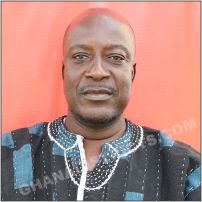

The water supply system in the District can basically be classified as rural, made up of boreholes, hand dug wells, small town water system and other natural water sources such as rivers, dams, ponds and dug out, etc. Though these other water sources are not potable, majority of the communities depend on them for their livelihood.
Status Of Boreholes Facilities Uuder CWSP- II
Boreholes serve as the major source of potable water for many communities in the district. These were either constructed by the then Ghana Water and Sewerage Corporation (GW&SC) or Community Water and Sanitation Agency (CWSA).
Small Town Water System ( STWS)
Attempts have been made to improve water supply in some of the big villages, through the STWS. Two of such facilities have been completed and are in operation at Nangodi and Kongo in the Nabdam traditional area.
A third one to serve the Tongo community is at the design stage. Processes have also begun to procure a consultant for the project.
The water Boards have been established to manage. These facilities. However, these board lack the requisite capacity to effectively run the facilities.
Status of Hand Dug Wells (HDWS)
Many communities are priorited with many HDW by NGO’s notably ADRA and Rural Aid but many of these are not protected to prevent contamination. Houses of same of there are high yielding many other are seasonal and not lined and will need further dipping and construction. However, they serve very important source of water to many communities and fill in the water shortage gap.
Hand-dug wells also form a very significant source of potable water supply to many communities in the District. Many of these wells were sunk by NGOs notably Rural Aid and ADRA; many of these are fitted with pumps. There are also traditional wells, sunk by landlords for consumption by their households.
Some areas in the district have peculiar water problems, where it is almost impossible to strike underground water or even to construct dams; a typical example is Pwalugu, where several futile efforts had been made to provide communities around the area with portable water. This has resulted into many people consuming water from untreated sources. This phenomenon is also common in the Nabdam and Sakoti areas.
Some areas are characterised with high fluoride content, notably, the wakii area, where several good yielding water points have been caped and cannot be developed due to the level of fluoride.
Sanitation Facilities
The Talensi District is not equipped with sanitation facilities due to its rural nature. Apart from a few public places, school and government quarters, where KVIPS and WCS are found respectively, the district is generally lacking such facilities as toilets, Slaughter houses, and urinals waste disposal sites.
The situation is chronic in the mining communities, market places and in school premises. KVIP toilets that are available are not well maintained and so are sometimes not suitable for use by the public.
Because of the absence of a permanent refuse deposal sites and the inadequacy of toilets facilities, refuse are often disposed around homes and scattered all over, defecation is also done indiscriminately. The health implications of these actions are obliviously visible to the rural folk.
The spate of filth related and infectious diseases within the communities calls for the need to embank on an aggressive personal hygiene and environmental sanitation campaigns to improve on the sanitation and the health of people.
As a result of poor staff strength of the Environmental Unit and the vast nature of the District Assembly is still strategising to design the best methodology of improving the sanitation situation in the District. However, activities are mostly concentrated on the inspection of animals before slaughtering on market days.
Challenges
1. Inadequate portable water facilities
2. Inadequate Sanitation facilities
3. No refuse disposal sites
4. Inadequate staffing
5. Poor Personal hygiene
Date Created : 11/23/2017 4:28:08 AM












 facebook
facebook
 twitter
twitter
 Youtube
Youtube
 +233 593 831 280
+233 593 831 280 0800 430 430
0800 430 430 GPS: GE-231-4383
GPS: GE-231-4383 info@ghanadistricts.com
info@ghanadistricts.com Box GP1044, Accra, Ghana
Box GP1044, Accra, Ghana